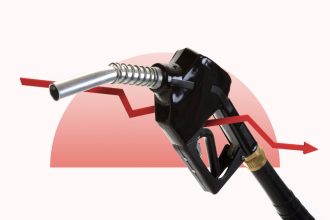Key takeaways
- To build good credit, it’s important to use your credit card responsibly from the beginning.
- Create a habit of only making purchases you can pay off immediately and paying off your card balance in full.
- Get familiar with all the perks and benefits included on your card.
- Don’t forget to monitor your credit score to correct mistakes or spot possible instances of identity theft.
Getting your first credit card is a huge step towards building the credit you’ll need later in life. By using your new credit card responsibly and wisely, you can begin building a valuable credit history and pick up new habits that will benefit you for decades to come. Though, you’ll want to make sure you have a plan in place that helps you get the most out of your first credit card, while avoiding the major pitfalls.
As we all know, far too many people get into financial trouble with their first credit card — either by racking up debt or making late payments that hurt their scores.
If you’re excited about your new card and want to make sure you’re using it to your advantage, here are some steps you should take right away.
Only use your card for purchases you can afford to pay off immediately
Due to the high interest rates credit cards charge, they are rarely the best option if you need to carry a balance for longer than a month. After all, the average interest rate for all major credit cards is currently around 20 percent, and many starter cards charge even higher rates.
With that in mind, you should only charge purchases you can afford to pay off immediately and refrain from using it for “splurge” purchases altogether. Also, try to use your credit card alongside a monthly budget or spending plan.
Get into the habit of paying your balance in full
Only charging what you can afford to pay off builds the habit of paying your credit card balance in full each month. This step will not only help you avoid paying credit card interest, but it will help you avoid a growing debt balance.
Paying your credit card bill in full each month also helps you keep your credit utilization ratio — or the amount you owe on your cards in relation to your credit limits — in check. How much you owe on your credit card accounts for 30 percent of your FICO score, making it the second most important factor. It’s second only to payment history, which accounts for 35 percent of your score.
Most experts suggest keeping your credit utilization ratio below 10 percent (or 30 percent, at most) for the best results.
Set up auto-pay
Since your payment history is the most important factor that determines your FICO score, you need to make sure you never pay your credit card bill late If you’re worried you’ll forget, consider setting up automatic payments to be drawn from your bank account on your credit card bill’s due date.
You can even set up auto-pay to pay for just the minimum payment amount. This won’t help you avoid carrying a balance from one billing cycle to the next, but it will help you avoid late fees and being hit with a penalty APR.
Earn rewards on spending
If your new credit card offers cash back or rewards points on your spending, you should take advantage of this benefit without putting yourself at risk.
For example, charge purchases that fall within any bonus categories your card offers, but don’t overspend just to earn rewards or sign-up bonuses. Always make sure what you’re spending fits into your existing habits.
Rewards aren’t worth it if you wind up carrying a balance. With most cash back credit cards offering 2 percent back at most and current interest rates on cards hovering around 18 percent, it’s easy to see how chasing rewards while you’re in debt is a losing proposition.
Know about your card’s perks
Also, make sure you read about any perks or features your credit card offers, which could include extended warranties, purchase protection against damage or theft, and travel insurance benefits.
By knowing which perks your credit card offers, you’ll be in the best position to take advantage of them. Just remember that most perks require you to pay for something with your card first. For example, you’ll only get travel insurance benefits for trips you charge to your credit card, and purchase protections only apply to items you paid for with your credit card.
Monitor your credit score
Finally, make sure to monitor your credit usage and your progress throughout your journey to building credit. Monitoring your credit can help you spot problems as soon as they occur and help you spot signs of identity theft or fraud.
Fortunately, many credit card companies give you access to a free credit score within your monthly credit card statement. Programs like Capital One’s CreditWise and Chase’s Credit Journey can also help you track your credit score and overall credit health for free.
The bottom line
Getting approved for a first credit card can be an exciting time, but you’ll want to make sure you have a plan to maximize the experience. By using your card intentionally, avoiding long-term debt and making the most of your credit card’s rewards and perks, you can get more bang for your buck and begin building positive credit habits that can last a lifetime.
Read the full article here














